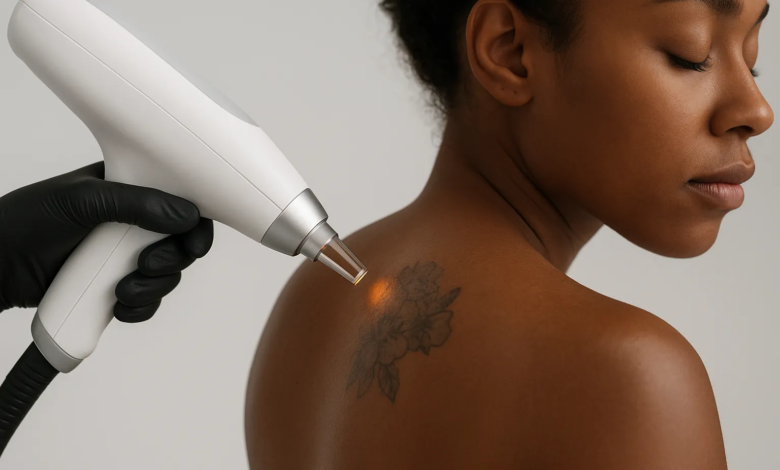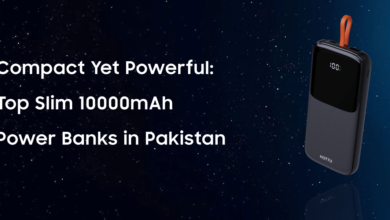Tattoo removal: What drives the choice of the right laser technique?

You want a clean result without trading it for new problems. The honest path starts with matching physics to biology: The wavelength must suit your ink, the pulse must suit your skin, and the schedule must suit your recovery. At NDN.LASER, we build tattoo verwijderen around those three levers so every visit has a purpose and every pause lets your skin finish the job.
How lasers clear ink (and why that matters to you)
A laser delivers a very specific colour of light. Pigment particles absorb that light and fracture into microscopic debris that your immune system carries away over the following weeks. The art is in balancing three variables: wavelength (what your pigment “drinks”), pulse duration (how long energy lands), and fluence (how strong each pulse is). When these are tuned to your skin and ink, tattoo removal is efficient and skin kind; when they are guessed, you get more heat and less progress.
Skin tone first: Melanin safety by design
Melanin also absorbs light, which is why skin typing still matters. For deeper complexions (Fitzpatrick IV–VI) we lean on deeper penetrating wavelengths and conservative energy ramps; for lighter tones (I–III) the menu is wider and escalation is quicker. This isn’t branding it’s risk control. The goal is simple: The target takes the hit, the surface stays calm, and tattoo removal protects tone and texture instead of stressing them.
Ink colour is the roadmap
Different pigments respond to different bands of light:
- Black and deep navy respond predictably to a longer wavelength that penetrates well.
- Reds and oranges clear on a shorter band that melanin also likes so parameters must be cautious.
- Greens and teals often need a third wavelength to move reliably.
For multicolour work, we stage hues instead of chasing everything at once. One wavelength, one clear objective per session this keeps tattoo removal steady and reduces irritation.
Picosecond vs. nanosecond: Tool, not religion
You’ll hear debates about pulse domain. Nanosecond q switched platforms are proven workhorses; picosecond systems add shorter pulses that deliver stronger photoacoustic impact with less thermal spread, useful for dense or layered pigment. In practice, a blended approach is common: pico for stubborn colour blocks or compact linework, nano for broader, lower risk sweeps. The right choice is the one that moves your ink safely today. That is how tattoo removal finishes cleanly in the fewest necessary visits.

Depth, location, and circulation
Where the tattoo sits changes the tempo. Shoulders and upper back (good microcirculation) quiet quickly and show earlier fade. Ankles, hands, and feet are slower and often need the longer end of the interval range. Depth matters too: packed, deep lines hold heat and respond more gradually than soft shading. None of this blocks progress; it simply shapes the timetable so tattoo removal respects healing instead of rushing it.
Why a test spot is worth 10 guesses
A tiny test spot answers the questions a photo cannot: How fast do you frost? How does early fade look at 2-3 weeks? Do we adjust fluence, spot size, or pulse width? With tattoo removal, guessing is expensive on both skin and schedule. A test spot tunes the recipe to your biology and reduces the chance of over treating tissue that is still remodelling.
Spacing that speeds the result (counterintuitive but true)
Clearance happens between sessions as your immune system carries debris away. Stack visits too tightly and you stack inflammation without extra fade. Most body sites do best with 6-10 week intervals; distal areas or higher melanin skin often benefit from the longer end. When spacing is honest, tattoo removal feels easier over time because density drops, heat dissipates faster, and the surface settles sooner.
Comfort is designed, not wished for
Pain fear usually fades in the first minute when you learn the rhythm brief, hot “snaps,” then cool air. We keep comfort predictable with strong contact or forced air cooling, good skin stretch and positioning, and (for small sensitive zones) topical anaesthetic under occlusion. Short, methodical passes beat long “hero” runs. The payoff is simple: Calmer skin today and cleaner photos in three weeks.
Recovery: The half you control
Treatment day is the first half. The second half is what you do at home. Within the first 48 hours, think cool, clean, protected: brief cool compresses, a gentle fragrance free cleanser, a bland moisturiser or light occlusive, and strict shade. Skip saunas, hot yoga, and pools until the surface looks quiet. UV control is non negotiable; sun is the number one saboteur of even outcomes after tattoo removal.
Reading “ready for next session” like a pro
Feeling helps, proof wins. We re photo under fixed light and check three signals: 1) the surface is calm (no new tenderness or expanding redness), 2) objective fade is visible (reduced density or line strength), and 3) you can commit to SPF for the next cycle. Green on all three? The next pass adds value. Amber on any? We protect skin quality and wait because patient tattoo removal is usually faster overall than rushed schedules the skin must “pay back.”
How clinic quality shows up
Good providers talk in plans, not promises. You should hear why a wavelength matches your colours, how pulse duration protects your tone, and when spacing will flex around holidays or outdoor seasons. You should see fixed light photos and parameter notes at every visit. That transparency turns tattoo removal from a leap of faith into a process you can trust.
Costs, value, and realistic planning
A low per session price can hide longer timelines, vague endpoints, or settings that buy downtime instead of clearance. Value looks like steady, photo proven fade with minimal irritation and a plan that adapts when skin tans or travel looms. With those guardrails, tattoo removal usually lands on the efficient side of the range for your colours and site.
Bringing it together
The “right” technique is not a brand logo; it is the wavelength, pulse, and spacing that match your pigment on your skin used by someone who adjusts by evidence, not guesswork. Start with a consult, insist on a test spot, protect recovery, and schedule by proof. Do that, and tattoo removal becomes predictable: quick, purposeful passes in clinic, quiet skin at home, visible fade at 2-3 weeks, and a clean finish that looks good in photos and even better up close.
Let the expertise of NDN.LASER guide you for a sustainable solution.





